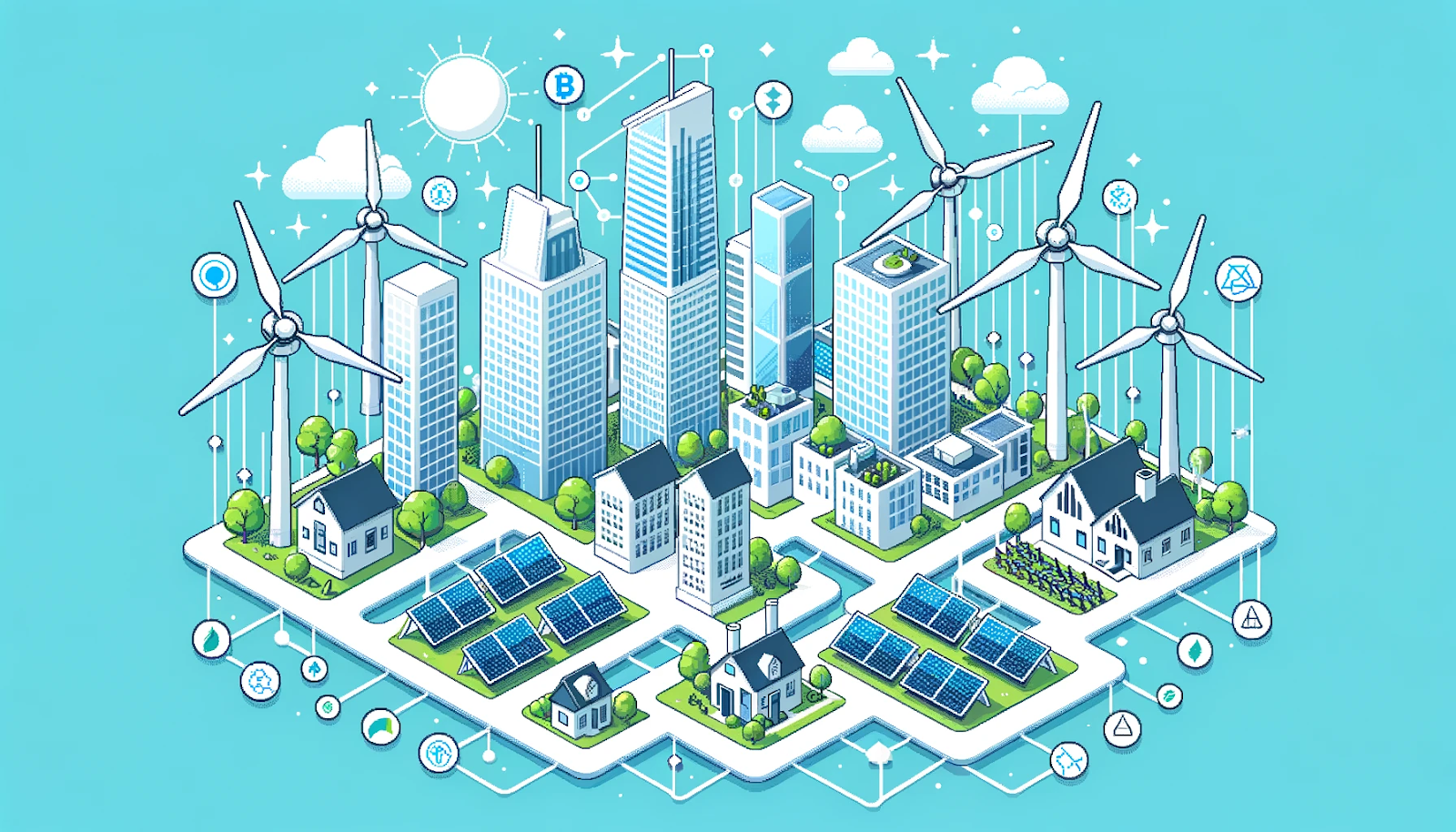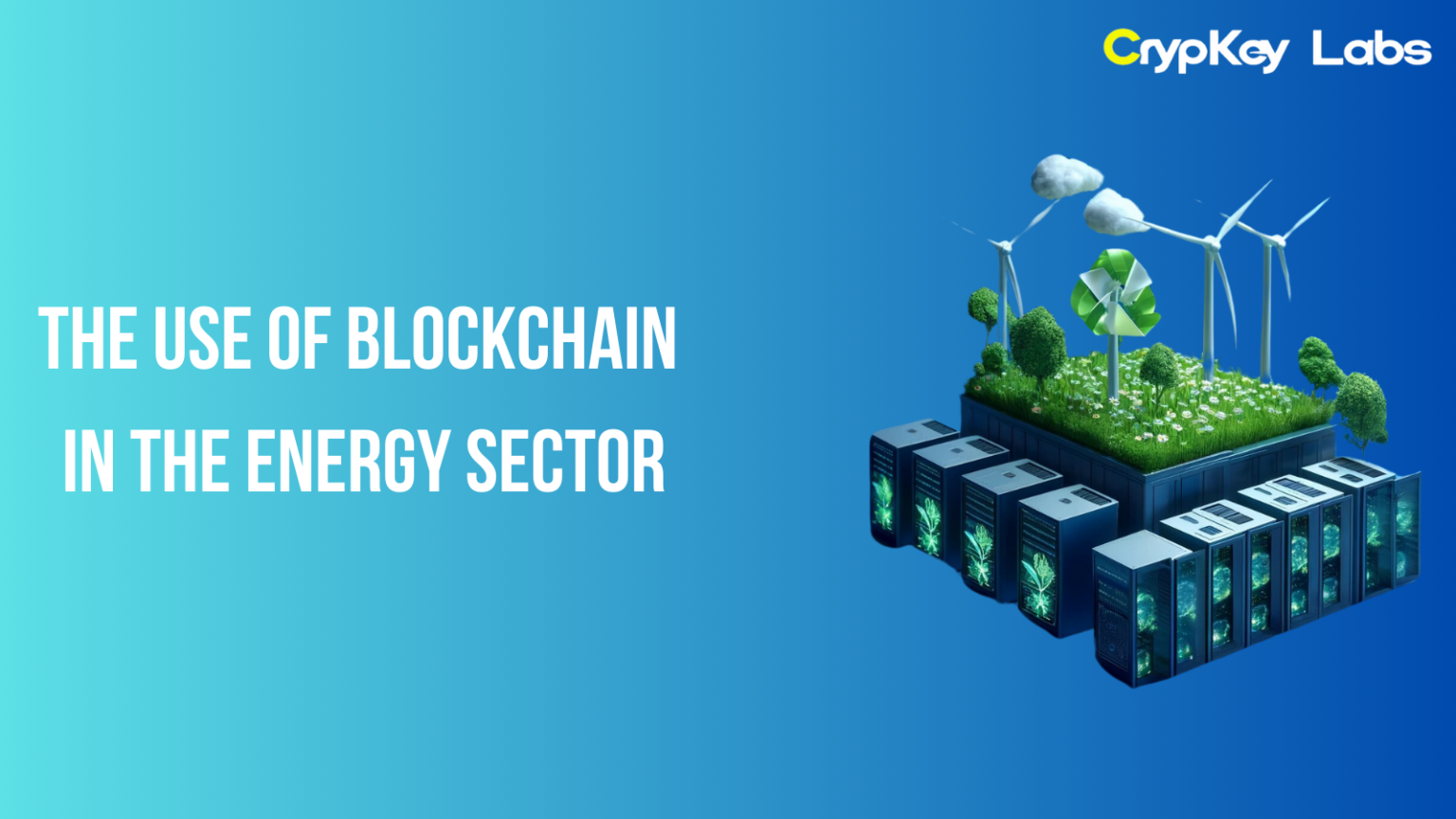The energy sector is one of the most critical industries in the world, powering our homes, businesses, and industries. But despite its importance, the sector faces a variety of challenges—inefficiency, lack of transparency, high costs, and difficulties in integrating renewable energy sources. Enter blockchain technology, a solution that has the potential to revolutionize the way we generate, distribute, and consume energy.
In this blog, we’ll explore how blockchain is transforming the energy sector, making it more efficient, transparent, and accessible. From decentralized energy grids to smart contracts and renewable energy tracking, blockchain offers a wide range of benefits. Let’s dive in and discover how this innovative technology is reshaping the future of energy.
Current Challenges in the Energy Sector
Before we talk about blockchain’s role, let’s look at the current state of the energy industry. Several challenges are hindering its growth and efficiency:
Inefficiencies in Energy Distribution
The traditional energy system is centralized, which means a small group of utilities controls the generation and distribution of power. This centralized model can lead to delays, inefficiencies, and higher costs. Energy is often lost during transmission, and outdated infrastructure doesn’t always allow for efficient energy usage or delivery.
Lack of Transparency
When was the last time you fully understood your energy bill? Most consumers have little insight into the origin of the energy they use, how it’s priced, and how much of it comes from renewable sources. The lack of transparency can make it difficult for consumers to make informed decisions about their energy consumption.
Energy Trading Complexities
Peer-to-peer (P2P) energy trading, where consumers can sell excess energy to one another (like from solar panels), is still in its infancy due to complicated trading mechanisms and settlement processes. This prevents consumers from fully capitalizing on renewable energy sources and contributing to decentralized grids.
Sustainability and Renewable Energy
The energy sector is also under pressure to transition to renewable energy sources like solar and wind. However, integrating these into traditional grids can be difficult due to the intermittent nature of renewable energy, which doesn’t always match the demand for power.
How Blockchain is Revolutionizing the Energy Sector
Blockchain technology is emerging as a solution to these challenges, offering a decentralized, transparent, and secure way to manage energy transactions and distribution.
Decentralization and Peer-to-Peer Trading
One of the most exciting applications of blockchain in the energy sector is peer-to-peer energy trading. Blockchain allows consumers to generate their own electricity (through solar panels, for instance) and sell excess power directly to others. Instead of relying on a central utility, transactions are recorded on a decentralized blockchain ledger, allowing consumers to trade energy securely and efficiently.
This decentralization reduces dependency on large energy providers and promotes the growth of microgrids—small, localized energy grids that operate independently. Microgrids can be especially useful in rural or underdeveloped areas where access to traditional energy infrastructure is limited.
Smart Contracts for Automated Transactions
Blockchain also introduces the concept of smart contracts, which are self-executing contracts with the terms of the agreement directly written into code. In the energy sector, smart contracts can automate energy trading, billing, and usage monitoring.
For example, if you generate excess solar power, a smart contract could automatically sell that power to your neighbor and deposit the funds into your digital wallet. This removes the need for middlemen and reduces transaction costs.
Energy Tokenization
Another revolutionary aspect of blockchain is energy tokenization. Energy units can be digitized into tokens, which can then be traded on blockchain platforms. Tokenizing energy creates a transparent, secure system for trading energy and allows users to track the source of their energy, whether it’s from fossil fuels or renewable sources.
Blockchain and Renewable Energy Integration
Blockchain can also play a key role in integrating renewable energy sources like solar, wind, and hydroelectric power into the grid.
Traceability of Renewable Energy
One of the key benefits of blockchain is its ability to provide transparency in energy sourcing. With blockchain, you can trace the entire lifecycle of energy—from the moment it’s produced to the moment it’s consumed. This allows consumers to verify whether the energy they’re using comes from renewable sources or fossil fuels.
Blockchain can be used to track the production of renewable energy and ensure that consumers are buying truly green energy. This transparency can encourage more people to fund in renewable energy, as they’ll have greater confidence in the authenticity of their energy purchases.
Certifying Green Energy Sources
Renewable Energy Certificates (RECs) are another area where blockchain can make a difference. RECs are tradable certificates that prove the origin of renewable energy. By using blockchain, RECs can be securely traded and verified, ensuring that green energy certifications are accurate and not subject to fraud.
Managing Decentralized Energy Sources
As more consumers adopt renewable energy solutions like solar panels, managing these decentralized energy sources becomes increasingly complex. Blockchain can simplify this by providing a secure, decentralized ledger to manage energy production, distribution, and consumption, allowing grid operators to efficiently integrate renewable energy into the system.
Blockchain in Energy Supply Chain Management
Beyond peer-to-peer trading and renewable energy, blockchain can also optimize supply chain management in the energy sector.
Tracking Energy Commodities
The energy supply chain is vast and complex, with many different players involved, from producers to distributors to consumers. Blockchain can be used to track energy commodities like oil, gas, and electricity from their source to their final destination. This ensures greater transparency and security across the entire supply chain.
Enhanced Security in Supply Chains
Blockchain’s immutability—the fact that once data is recorded on the blockchain, it cannot be altered—provides an added layer of security. Energy companies can use blockchain to ensure that contracts are honored, and that energy is sourced, transported, and delivered in a secure and transparent manner.
Optimizing Distribution Networks
By using blockchain to track energy distribution, companies can identify inefficiencies and optimize their logistics. This can lead to reduced energy losses during transmission and distribution, ultimately lowering costs for consumers.
Overcoming Challenges and Limitations of Blockchain in Energy
Despite its many benefits, blockchain still faces challenges in the energy sector.
Scalability Issues
One of the main challenges is scalability. The energy sector requires high transaction throughput, and current blockchain systems may struggle to handle the volume of transactions needed for widespread adoption.
Regulatory Concerns
Energy markets are heavily regulated, and blockchain’s decentralized nature can pose challenges for regulators. It’s essential for governments and energy companies to develop regulatory frameworks that support the use of blockchain in energy trading.
High Energy Consumption
Blockchain itself, particularly proof-of-work (PoW) blockchains like Bitcoin, is known for its high energy consumption. This is ironic given that blockchain is being used to promote energy efficiency. However, more energy-efficient consensus mechanisms, like proof-of-stake (PoS), are being developed to address this issue.
The Future of Blockchain in the Energy Sector
As blockchain technology continues to evolve, its role in the energy sector will only grow.
Smart Grids and IoT Integration
The future of energy lies in smart grids—energy systems that use sensors, AI, and IoT devices to optimize energy production and consumption. Blockchain can serve as the backbone of these smart grids, securely managing data and transactions between millions of devices.
Global Adoption
Blockchain’s potential in the energy sector isn’t limited to a single region or country. As more companies and governments recognize its benefits, we can expect to see blockchain adopted on a global scale, revolutionizing energy markets worldwide.
Sustainability and Green Energy
Blockchain will play a critical role in the transition to renewable energy, helping to reduce our reliance on fossil fuels and promote sustainability. By providing transparency, security, and efficiency, blockchain can accelerate the growth of green energy solutions.
Conclusion
Blockchain is poised to revolutionize the energy sector by addressing its most pressing challenges—inefficiencies, lack of transparency, and the integration of renewable energy. Through decentralized energy trading, smart contracts, and improved supply chain management, blockchain offers a brighter, more sustainable future for the energy industry.
As we look to the future, it’s clear that blockchain will play a central role in modernizing energy systems, making them more efficient, transparent, and secure. With continued innovation and adoption, blockchain will drive the energy sector toward a greener, more decentralized future.







